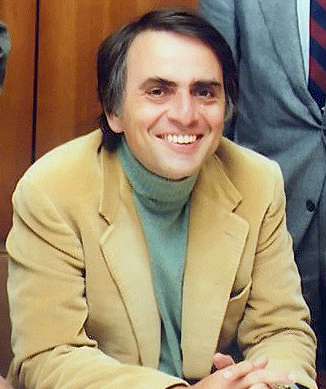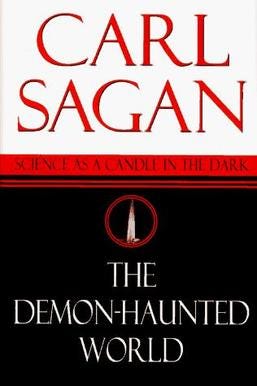Mastering the Art of Bullshit Detection with Carl Sagan's Wisdom
Written on
Chapter 1: The Challenge of Detecting Misinformation
In today’s world, we are inundated with a cacophony of voices, all vying to share their insights. While some of this information is factual and crucial—such as the reality of climate change and the efficacy of vaccines—much of it is simply nonsense. The ability to discern truth from falsehood is not just a survival skill; it is essential for navigating life successfully. Without this skill, we risk falling victim to false claims like the Earth being flat or the idea that the 2020 election was stolen.
So, how can we reliably differentiate between what is true and what is not?
Many experts have paved the way, offering solid guidance on this complex journey. One of my personal favorites is Carl Sagan, a brilliant mind who excelled at cutting through the noise and inspiring millions. Though he is no longer with us, his insights remain relevant today.
Who Was Carl Sagan?
If you find yourself asking, "Who?", here’s a brief overview of his life (with a nod to his Wikipedia page):

Carl Edward Sagan (November 9, 1934 — December 20, 1996) was an influential American astronomer, planetary scientist, and science communicator. His notable contributions include research into extraterrestrial life and the development of the Pioneer plaque and Voyager Golden Record, universal messages intended for any potential extraterrestrial intelligence. Sagan also supported the idea that Venus's extreme surface temperatures are due to the greenhouse effect.
However, he was more than just a science communicator; he was arguably the defining figure in that role during the 1980s. Sagan wrote and narrated the PBS series Cosmos: A Personal Voyage, which became the most-watched series in American public television history at the time. His ability to connect with audiences inspired awe and curiosity in countless viewers.
Sagan was a professor at Harvard and later at Cornell, authoring over 600 scientific papers and many popular science books. His work was not only informative but also poetic, igniting passion and expanding the horizons of many minds.
Carl Sagan's Toolkit for Identifying Misinformation
For those seeking practical techniques to spot misinformation, Sagan's “Baloney Detection Kit” offers clear and actionable advice. While he used the term "baloney" instead of "bullshit" in his 1995 book The Demon-Haunted World: Science as a Candle in the Dark, the essence remains the same. In Chapter 12, titled "The Fine Art of Baloney Detection," he outlines how easily we can be misled and presents the cognitive tools that scientists utilize to navigate this minefield of information.

Key Insight: Sagan emphasizes that these scientific principles are not just for scientists; they are for everyone when confronted with dubious claims.
Here’s a summary of Sagan's nine-step kit for critical thinking:
- Verify Independently: Always seek independent confirmation of the facts.
- Engage in Dialogue: Foster substantial debate among knowledgeable individuals with differing viewpoints.
- Question Authority: Be cautious of claims that rely solely on authority; experts can make mistakes, too.
- Explore Alternatives: Consider multiple hypotheses and think of ways to disprove each one.
- Remain Flexible: Hold your conclusions loosely and be ready to revise them in light of new evidence.
- Quantify: Whenever possible, attach numerical measurements to claims to enhance clarity.
- Examine the Chain of Reasoning: Every link in an argument must be sound; if one fails, the entire argument does too.
- Favor Simplicity: When faced with equally plausible explanations, choose the simpler one—Occam’s Razor.
- Demand Testability: Ensure that the hypothesis can be tested and potentially falsified.
What Not to Do
In addition to outlining what to do, Sagan also highlights common logical fallacies to avoid. Recognizing these pitfalls is critical for effective reasoning.
For further insights, I encourage you to delve into Sagan's book. It's a valuable resource that deserves a spot at the top of your reading list.
Expert tips for identifying misinformation effectively.
Learn practical strategies for detecting false claims with insights from John Petrocelli.